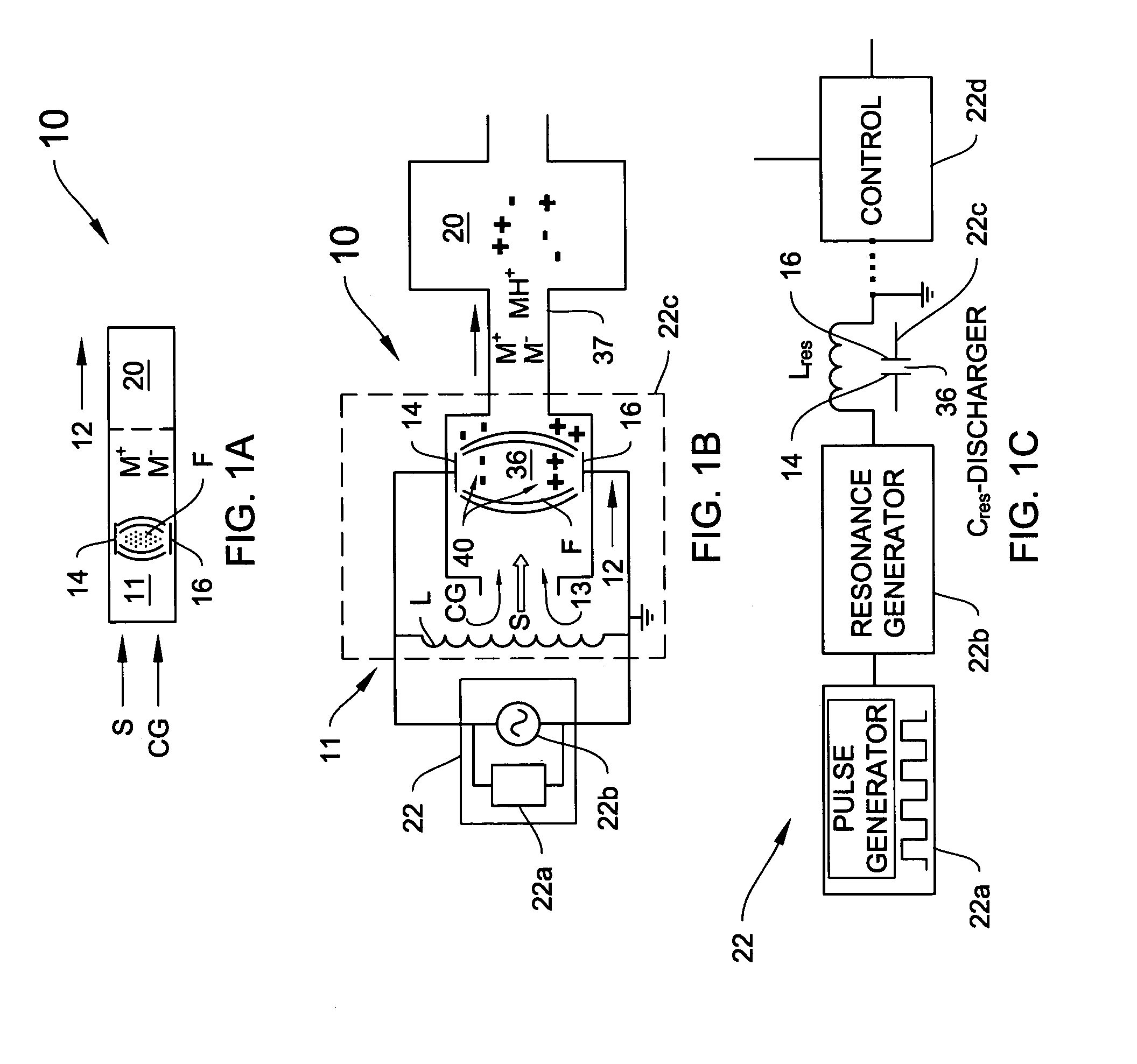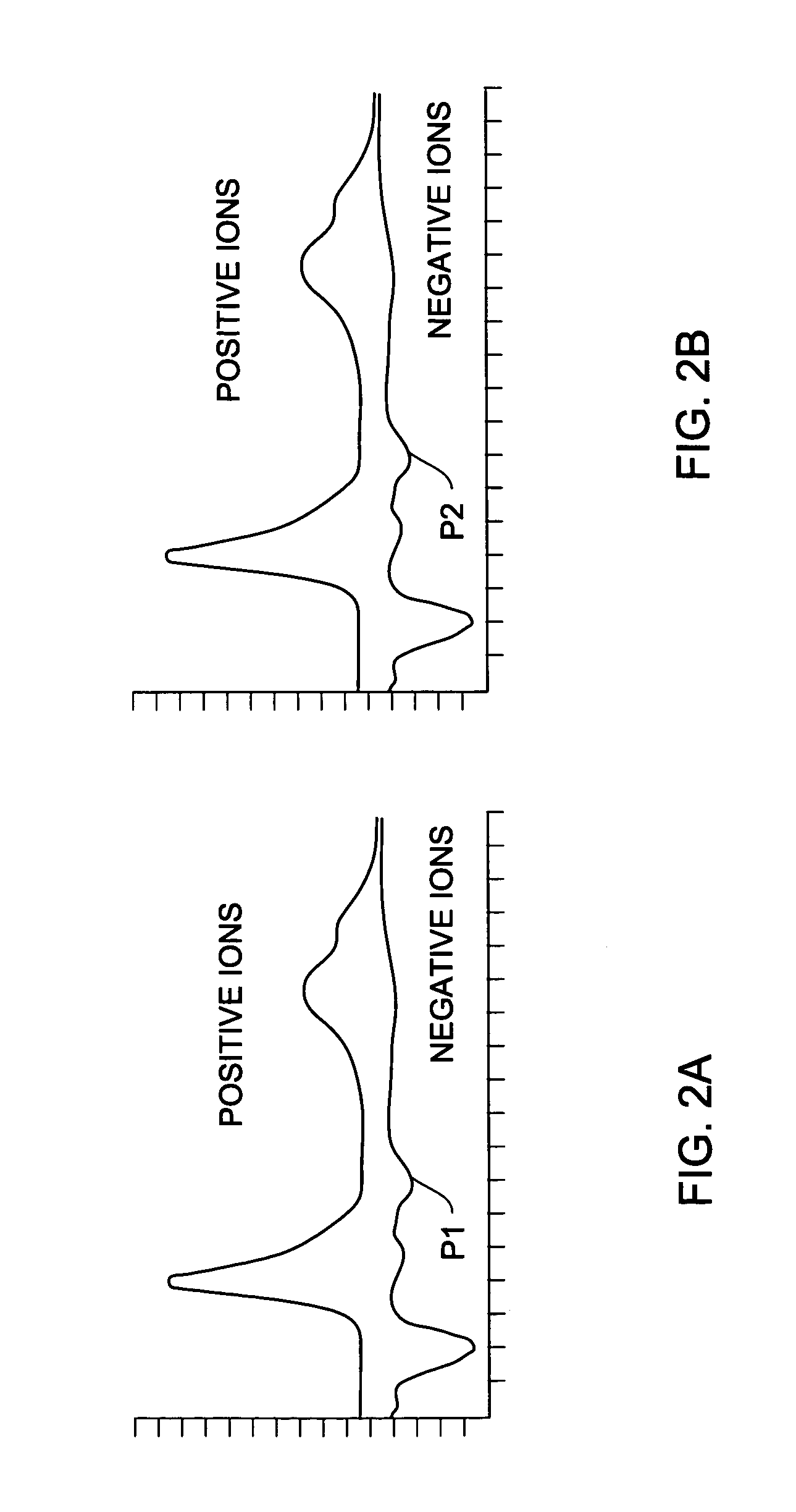Method and apparatus for plasma generation
a plasma generator and plasma technology, applied in the field of ionization sources, can solve the problems of low ionization amount, process instability, and limited use of equipment using radioactive ionization sources, and achieve the effects of reducing device performance or output intensity, and low to moderate ionization energy
- Summary
- Abstract
- Description
- Claims
- Application Information
AI Technical Summary
Benefits of technology
Problems solved by technology
Method used
Image
Examples
embodiment 10
[0135]FIG. 20F shows a plural channel embodiment 10 of the invention, including a first flow channel 270 having a plasma ionizer 11, which receives the gas flow CG and generates the ions ++,−−. These ions flow into an ion diverter, which may be a baffle or another gas flow, to influence and redirect the ion flow. Preferably, the diverter is selective. For example, FIG. 20F includes a diverter 271, which diverts selected ions into second flow channel 272 through opening 273. The remaining flow and other by-products of the plasma ionization process are exhausted out of flow channel 270 at vent 280.
[0136]The diverter may also be a biased electrode. In one embodiment, as shown in FIG. 20F, diverter 271 includes first and second electrodes 274 and 275 which are independently biasable. In one illustration, electrode 274 is negatively biased which drives the negative ions −−,−− generated in the plasma ionization part 11 through access 273 into a sample ionization section 276 in the second ...
embodiment 700
[0185]Because of the packetized nature of the ion production, other information may also be gleaned through use of this technique. For example, in the embodiment 700 of FIG. 30, a waveform of the drive signal 705 and detection signal 710 can be compared against one another in the DSP on the rising edge or falling edge to determine a “time of flight” (TOF) of the ions from the ionization source 405 to the detector 415, which provides useful detection information like that obtained in known TOF ion mobility spectrometers. A DMS filter drive according to an illustrative embodiment of the invention will now be discussed. There is a need for efficient DMS filter drive circuit designs as may be desirable for faster and more reliable operation, especially in the context of hand-held and battery-operated applications. Moreover, traditional designs typically exhibit poor efficiency due to the effects of both parasitic and load capacitances. As discussed below, the invention, in various illus...
PUM
 Login to View More
Login to View More Abstract
Description
Claims
Application Information
 Login to View More
Login to View More - R&D
- Intellectual Property
- Life Sciences
- Materials
- Tech Scout
- Unparalleled Data Quality
- Higher Quality Content
- 60% Fewer Hallucinations
Browse by: Latest US Patents, China's latest patents, Technical Efficacy Thesaurus, Application Domain, Technology Topic, Popular Technical Reports.
© 2025 PatSnap. All rights reserved.Legal|Privacy policy|Modern Slavery Act Transparency Statement|Sitemap|About US| Contact US: help@patsnap.com



